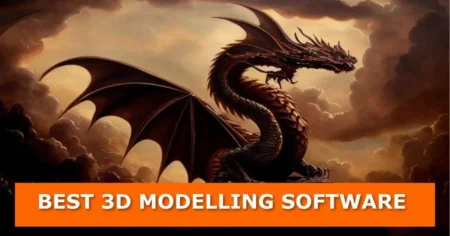One of the most common questions I get is: What software do you use? The simple answer is that I use Blender for sculpting, texturing, rigging, animation, and rendering. But is that the best program for you? Let’s find out.
In this post, I’ll break down some of the most popular 3D animation software options available and help you determine the best choice for your needs as a beginner.
1. Autodesk Maya
Maya is the industry standard for 3D animation. If your goal is to work in major studios, knowing Maya opens up job opportunities and makes collaboration easier with other professionals.
Pros:
- Powerful modeling, rigging, animation, and rendering tools
- Used in most studios, making it a great career investment
- Almost limitless features for professional work
Cons:
- Steep learning curve – You may need formal training to master it
- Expensive – Subscription costs are high
Pricing:
- $245/month
- $1,945/year
- $5,830 for three years
Try Maya for free:Download trial version
2. Maxson’s Cinema 4D
Cinema 4D is a beginner-friendly 3D animation software, often compared to a 3D version of After Effects. If you’re familiar with After Effects, the transition will be easier.
Pros:
- Easy to learn – Great for beginners
- Fast rendering – Ideal for motion graphics and advertising
- Seamless integration with Adobe After Effects
Cons:
- Expensive – The full package can cost up to $1,500 annually
- Not as widely used in major animation studios compared to Maya
Try Cinema 4D:Download trial version
3. Blender
Blender is completely free and open-source, making it the best choice for beginners and budget-conscious artists. Over the years, Blender has grown to rival professional software like Maya and Cinema 4D.
Pros:
- Free to use – No subscription fees
- All-in-one solution – Model, rig, animate, texture, and render in one program
- Active development – Constantly improved by artists and developers
- Huge community support – Tons of free tutorials and add-ons
Cons:
- Not industry-standard yet – Some studios still prefer Maya
Try Blender for free: Download here
Final Thoughts
Regardless of the software you choose, animation principles remain the same. Understanding concepts like anticipation, ease-in and ease-out, and secondary action will make your animations stand out, no matter the tool.
The best software is the one that fits your workflow, budget, and goals. Take the time to explore these options and see which one works best for you!
What’s Next?
What software are you using or considering? Let me know in the comments!If you found this helpful, share this post with fellow animators.Check out more tutorials here:Our Blog






